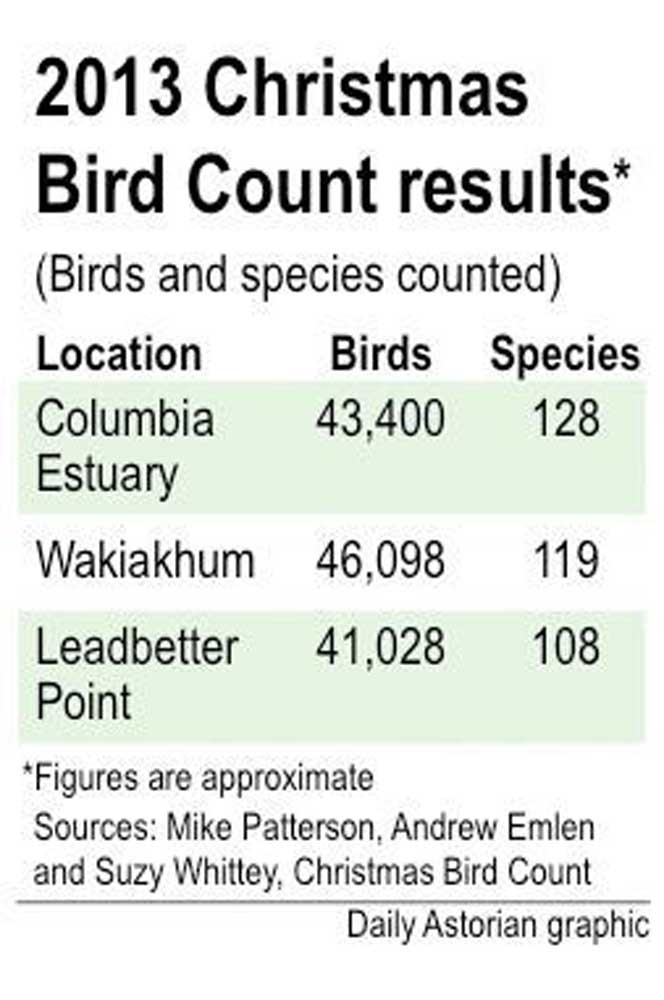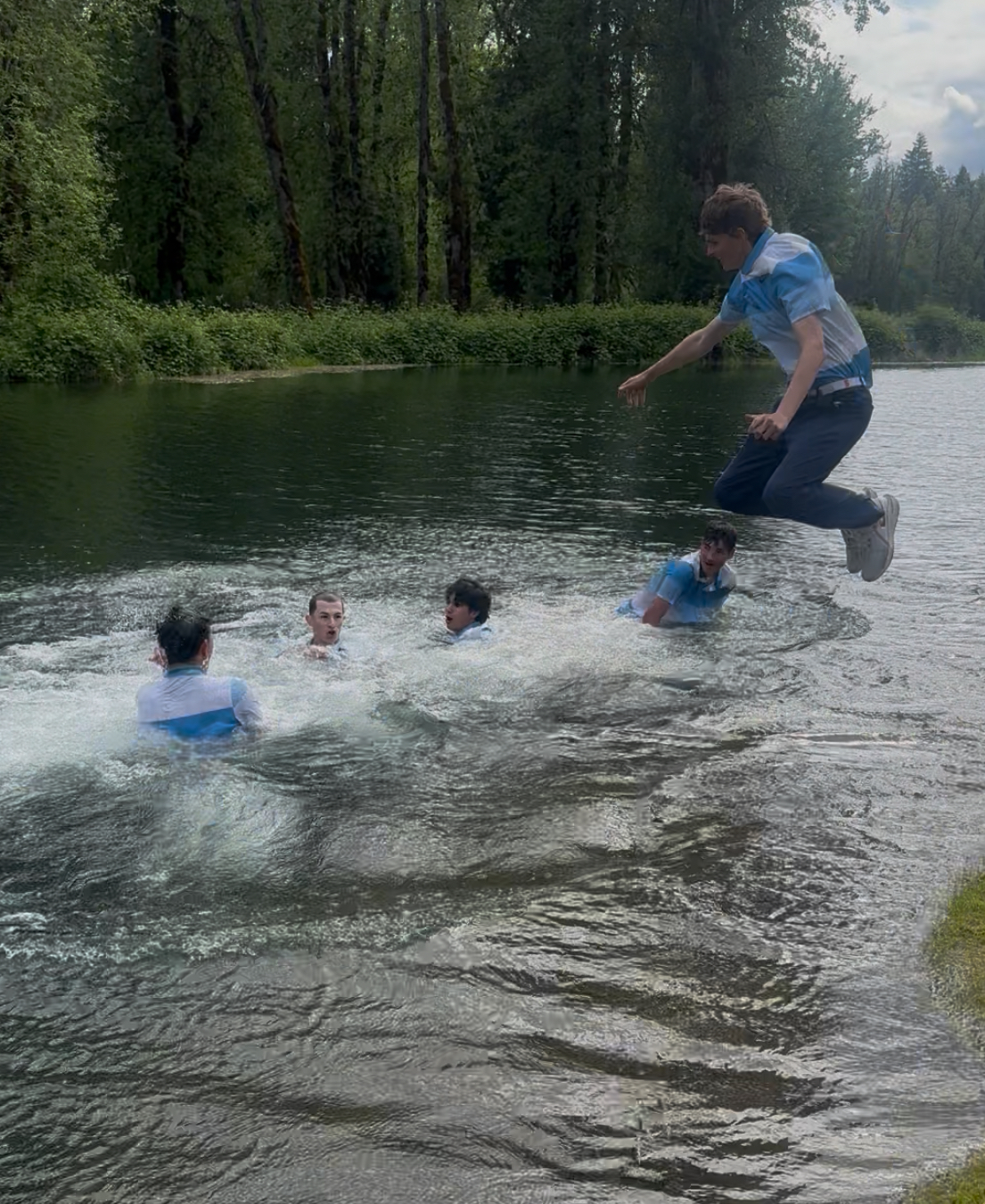Birds on the North Coast: Cackling geese win; doves, starlings abound
Published 4:00 pm Thursday, January 16, 2014

- 0117 DA Bird.count 4.jpg
There are plenty of birds along the lower Columbia River.
And a about 80 volunteers along the North Coast, Long Beach Peninsula and upriver counted upward of 128 species and more than 130,000 of them on three days in December and January as part of the National Audubon Societys 114th consecutive Christmas Bird Count, which ran from Dec. 15 to Jan. 5.
Theyre not trained scientists, but there are rules, said Mike Patterson, a counter on the coast since 1987 and current organizer of the Columbia Estuary count. It is a protocol-based, data-gathering effort. And it is the largest and most long-term data-gathering effort for birds in the world. Theres nothing that comes close to it, in the coverage.
Armed with binoculars, bird guides and checklists, tens of thousands of volunteers across the western hemisphere try to count all the birds in a 15-mile radius circle for a day, staggering themselves throughout the circle and at different times. There are more than 2,000 count sites.
The Columbia Estuary count, centered on the Columbia River halfway between Chinook, Wash., and Hammond, started in 1979.
The Dec. 15 count this year, said Patterson, didnt reveal any exciting trends, but rather a continuation of the past.
Everything about counting is about long-term trends, he said, adding that about half the birds counted are ones that show up every year. Anybody who tells you anything that has fewer than four or five years attached to it is just blowing smoke.
In the Columbia Estuary count, volunteers recorded about 43,000 individual birds spread over 128 species. Patterson said the European starling, an invasive species from Eurasia that has become common across North America, averages around 20,000 in the count.
We also see a lot of ducks. Duck numbers are in the thousands, he said. The big news these days is a bird called the Eurasian collared dove, which had never been recorded on the count before five years ago. We probably had over 150 of them, and in the Wahkiakum count, I had 90 of them sitting in one tree.
High numbers
The 15th-annual Wahkiakum count, in a 15-mile radius circle centered on Clifton, recorded more than 46,000 individual birds spread out over 119 species.
The most abundant species in the circle, for the third year running, is cackling goose (10,612), followed by European starling (8,541) and greater scaup (7,304), said Andrew Emlen, organizer of the count.
Counters call species that suddenly appear as irruptive.
Last year one of the most abundant species in the circle was pine siskin, with 2,759 individuals, with siskins found every area of the circle. This irruptive species has moved elsewhere to forage this year our total was five.
In the Leadbetter Point count in Washington, the circle centered on Willapa Bay. More than 40 volunteers traveled from as far as Seattle and counted more than 40,000 birds over 108 species. Among the most common were more than 5,600 American widgeons, a species of duck found throughout North America, and more than 11,000 northern pintails, a common duck species estimated at about 6 million strong in North America. For more information on the Leadbetter Point count, visit http://willapahillsaudubon.org/
Patterson said one continuing trend is invasive species.
Birds and Climate Change: An Analysis of the Christmas Bird Count, done in 2009 by the National Audubon Society, found that 177 of the 305 species in the analysis came north over the last 40 years, correlated with a January temperature increase of nearly five degrees over the same time period.
As the regional editor for the National Audubon Society, Patterson reviews about 80 counts from Oregon and Washington.
The national group publishes American Birds, a report on the Christmas Bird Count, the following fall.





